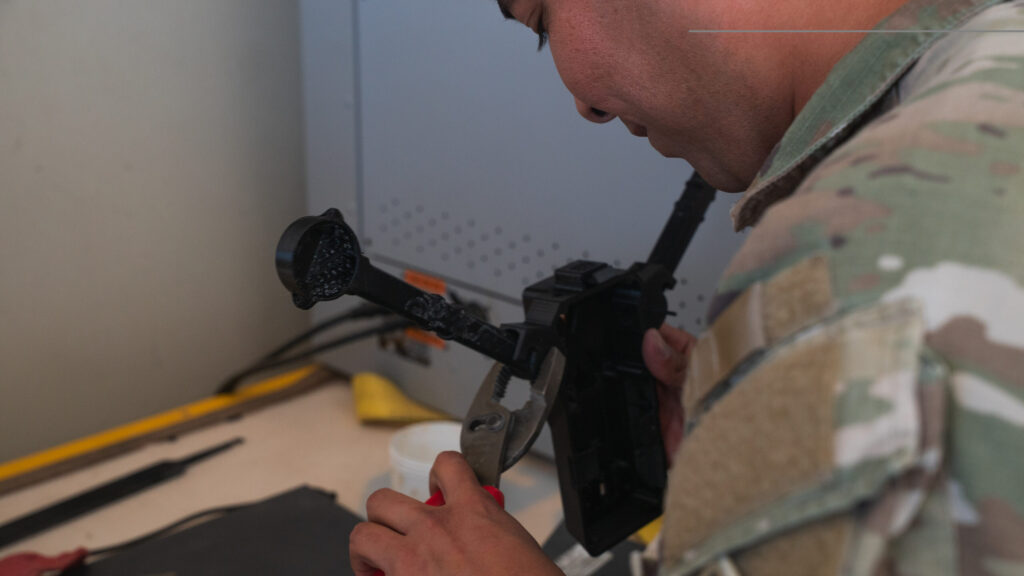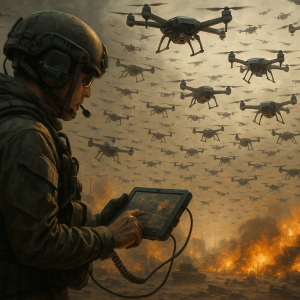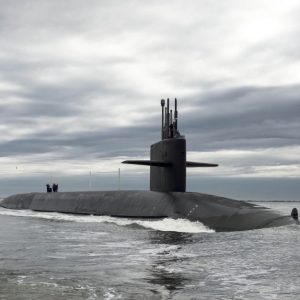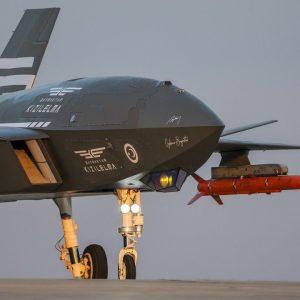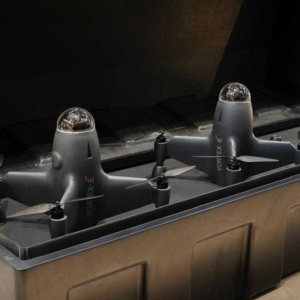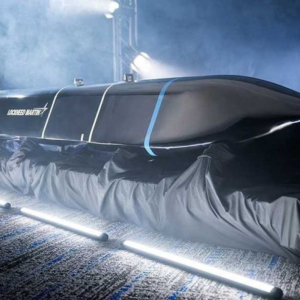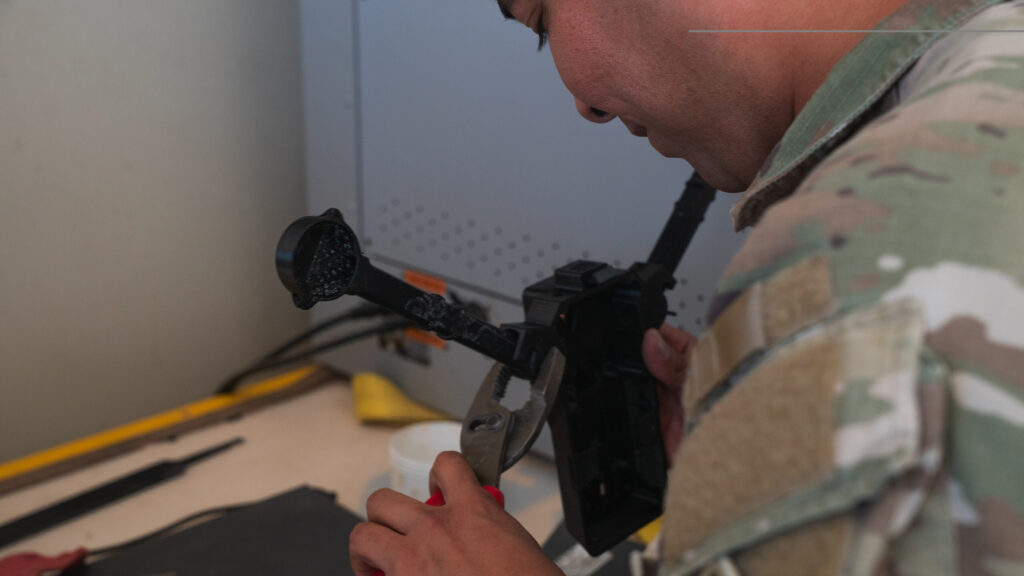
The U.S. Army has moved to delegate frontline approval for additively manufactured components, enabling commanders to authorize and field small replacements without routing decisions to higher headquarters [1]. This step makes the policy intent explicit: accelerate fixes, return combat power to the line, and use the “right to repair” to close sustainment gaps in dispersed operations. Framed that way, Army 3D-printed parts approval is less a tech stunt than a logistics reform anchored in readiness metrics.
What changed—and why it matters
Army Secretary Daniel Driscoll said commanders may now decide whether a printed part—a door handle on an Infantry Squad Vehicle or a minor fitting on an M777 howitzer—is “good to go,” rather than waiting for distant officials [1]. That cuts turnaround time and empowers the echelon that owns the operational risk. The Army’s Chief of Staff, Gen. Randy George, added that the service has already produced “a couple thousand” parts that are, in his words, “probably better than the original” [1].
Operationally, the shift aligns with a broader push for advanced manufacturing at the point of need. Official Army guidance has cast additive manufacturing as central to multi-domain sustainment: compressing design-to-production timelines and enabling on-demand fabrication where supply lines are fragile or contested [2]. As a policy lever, Army 3D-printed parts approval makes that doctrine executable under real-world command authority.
Indo-Pacific logistics and the “tyranny of distance”
Driscoll was explicit about the theater driver: Indo-Pacific distances make traditional repair and spares shipment cycles too slow, especially during high-tempo operations [1]. Pushing decision rights forward lets units print low-risk items in-theater, reducing the logistics tail. That approach aligns with the Army’s experimentation and war games, which highlight advanced manufacturing as a game-changer for design, delivery, and sustainment across long distances [3]. In practice, Army 3D-printed parts approval turns distance into a quality-of-service problem that commanders can solve locally.
From pilot lines to doctrine: the industrial base angle
Behind the field printers sits an organic manufacturing network. The Rock Island Arsenal–Joint Manufacturing & Technology Center (RIA‑JMTC) is designated as the Army’s center of excellence for advanced and additive manufacturing, and it runs programs such as Battle Damaged Repair & Fabrication (BDR&F) to expedite parts to the field [4][6]. Those efforts build the digital thread—the validated models, material data, and process parameters—so that when a commander greenlights a print, it’s tied back to an authoritative technical baseline.
Strategically, that digital backbone is where the industrial base scales. The DoD’s additive manufacturing strategy envisions enterprise-wide reuse of data and qualified processes, reducing cost and cycle time while preserving industry IP [5]. Decentralized production does not mean improvisation; it means qualified equivalents pushed closer to the edge, coordinated with depots and OEMs where required. In that sense, Army 3D-printed parts approval is a governance change layered onto an evolving technical ecosystem.
Risk, assurance, and where the line is drawn
Not every part is a candidate for the printer. Safety-critical, load-bearing, or energetics-related components will still demand formal airworthiness or worthiness certifications and adherence to material and process controls. What shifts is the authority to approve low-risk, non‑safety‑critical items—handles, covers, clips, brackets—whose failure modes are well understood and whose geometries are within the envelope of proven machines and materials. Commanders are now tasked to weigh mission need, risk, and available data before signing off.
Practically, assurance rests on three layers: verified design files; controlled print parameters and materials; and inspection fit for purpose. RIA‑JMTC’s BDR&F workflows and Army technical bulletins help codify these controls so that a forward print matches the intended performance and fits without rework [6][7]. Done right, Army 3D-printed parts approval doesn’t loosen standards; it relocates them to the point of action.
Speed, cost, and readiness effects
Turnaround speed is the headline benefit. A replacement that once waited on shipping and queue time can now be produced overnight and installed the next morning. Cost is competitive or lower for small polymer or aluminum parts, especially when shipping, kitting, and idle-platform costs are included. Most importantly, the change returns vehicles and guns to the line faster, which is the real currency of readiness. As the volume of qualified designs grows, expect the long tail of “trivial but blocking” faults to shrink.
What to watch through FY27
Driscoll signaled more funding for additive manufacturing in the FY27 cycle, citing the need to adapt quickly in a potential long war against a peer adversary [1]. Watch for three markers. First, growth in the Army’s catalog of qualified printable parts, especially for ground systems. Second, expansion of expeditionary printing kits and training at brigade and division levels. Third, tighter integration between field units, depots, and OEMs via shared technical data packages. Together, those trends will determine whether Army 3D-printed parts approval remains a niche convenience or becomes a standard sustainment tool.
Key Facts
- Policy: Commanders can approve low-risk, 3D‑printed replacement parts at the point of need [1].
- Scope: Examples include ISV door handles and minor M777 fittings; thousands of parts already produced [1].
- Theater driver: Indo-Pacific “tyranny of distance” motivates local printing authority [1].
- Backbone: RIA‑JMTC runs the Army’s advanced/additive manufacturing center of excellence and BDR&F program [4][6].
- Outlook: Expect increased AM funding in FY27 and a larger qualified parts library [1].
Context: where this fits in the sustainment stack
This policy complements adjacent initiatives to strengthen domestic and organic manufacturing capacity and to reduce bottlenecks during surge. It also aligns with lessons from current conflicts, where simple components can immobilize critical systems for want of a small, proprietary part. With Army 3D-printed parts approval, the Army aims to turn those single-point failures into quick, documented fixes—without diluting safety or configuration control.
Further Reading
• Defence Agenda analysis: U.S. defence-industrial base readiness [8]
• Army official perspective on advanced manufacturing in sustainment [2]
• Army’s ground vehicle AM readiness effort (BDR&F) [7]
• DoD additive manufacturing strategy overview [5]
• Commentary on fielding 3D printers for battlefield repair [9]
References
- Breaking Defense — “Army allowing commanders to approve 3D‑printed parts for faster repairs,” Sept. 17, 2025.
- Army.mil — Transforming Army Sustainment Through Advanced Manufacturing, Apr. 18, 2025.
- Army.mil — Advanced manufacturing focus of upcoming Army war game, Dec. 3, 2024.
- U.S. Army TACOM — RIA‑JMTC: Center of Excellence for Advanced & Additive Manufacturing.
- OUSD(R&E) — DoD Additive Manufacturing Strategy (overview).
- Army.mil — RIA‑JMTC AM Center of Excellence: BDR&F program, May 15, 2024.
- Army.mil — AM advances support Army ground vehicle readiness, Mar. 6, 2025.
- Defence Agenda — U.S. Defence‑Industrial Base Readiness.
- The Defense Post — “US General Says 3D Printers Should Join Guns on the Battlefield,” June 11, 2025.
Related on Defence Agenda: U.S. defence‑industrial base readiness · Counter‑UAS: rocket‑assisted interceptor concept

